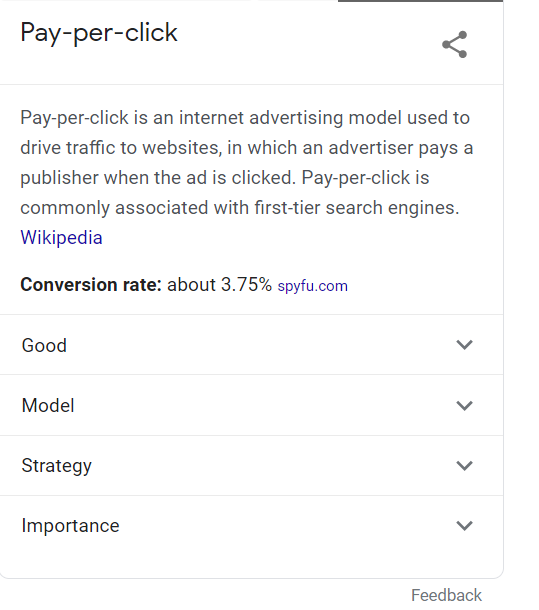1. Good Monday Morning
It’s June 14. Happy Father’s Day on Sunday to all the dads, those who have fathered children and those dads who haven’t. We see you.
Today’s Spotlight is 1,545 words — about a 6 minute read.
2. News To Know Now
Quoted: “So there is no way to give a third party app your location and not Google? This doesn’t sound like something we would want on the front page of the [New York Times].” — an unnamed Google employee quoted in newly unredacted court documents.
a) Voilà AI Artist is a viral app that creates cartoon avatars from photos. Their popularity exploded last week. Everyone posting photos of themselves looking like a Disney lead character or Renaissance painting has given a Canadian company some online information. Removing the watermark starts the clock on a 3 day trial period that turns into a $2 weekly subscription. Voilà is the top free app in both Google & Apple stores, ahead of such laggards as YouTube, TikTok, and Instagram.
b) TikTok seems to have edited Android user images on their own. Journalist Abby Ohlheiser wrote that some users were seeing subtle differences in their images — almost as if a beauty filter had been applied. After verifying the results herself, Ohlheiser contacted TikTok, which did not answer, but magically, the effect stopped appearing. (MIT Technology Review)
c) Amazon’s newest Echo Show device can identify when a human is in the same room. The device can’t identify the person yet, but as this CNET walk-through shows, you can turn lights on or off, lock a door, or activate any of the routines you’ve configured Alexa to handle when you trigger the device.
3. Search Engine News
As Google continues on its mission to organize the world’s data, some of that data may not be accurately sourced.
Industry news site SEO Roundtable noted that a Google knowledge graph about SEO sources a monthly average price of $2,819 to a self-described small team in Texas.
They got the numbers from a marketing software company. The creator of the data isn’t even mentioned in the Google search results. And after watching colleagues try to reverse what happened, the agency’s actions were pretty innocent.
Like all of us, they copied and sourced (although didn’t link to) information on an authoritative site. That information could be there for years, just like information in a book is permanent and unchanging. But I promise you that the number quoted is too high for most small businesses and many nonprofit organizations.
Of course the search experts then went looking for similar examples and found another. This time there was a quote inside a Google knowledge graph that suggested the return on an advertising campaign is 80%, which is a silly number that means nothing without context.
Here is an example that I found after only a few minutes of searching.

The search result on the right shows “Conversion rate: about 3.75%” and quotes software company SpyFu. The problem is that SpyFu published its data 18 months ago. It was based on even earlier data from yet another software company’s report.
Remember this example and source information yourself unless there is detailed information at the provided link because Google’s data extraction remains imperfect.
4. In The Spotlight — 3rd annual Police Technology Overview
We’re back with year three of our annual look at police technology. In previous years, we’ve covered doorbell camera videos shared with police, local use of facial recognition data sourced from non-police sources, persistent vehicle surveillance from the air, broad warrants that seek the names of everyone in a location, and even predictive algorithms that identify citizens as “likely to break the law.”
You can read those previous police technology reports here: 2019 and 2020.
The best example demonstrating how police technology is used today is shown in this criminal complaint (PDF) filed by the FBI against Chicago Police officer Karol Chwiesiuk for his participation in January’s domestic terror attack on the U.S. Capitol. The June 10 document is relatively easy to read as the agent meticulously documents Officer Chwiesiuk’s activity:
- An email received on January 5 from an organization called “Stop the Steal” with logistics information.
- Multiple locations mapped out between January 4 and January 8, tracking the defendant from Chicago to Washington and back.
- Multiple locations mapped out around Washington showing the time and day that the officer was in Washington and when he traveled to the Capitol the night before the rally.
- Texts beginning January 3 when he contacted a friend and said that he was “traveling to dc … to save the nation.” He also texted during these conversations that he was “busy planning how to fuck up commies.”
- Multiple texts with pictures showing the defendant participating in the attack. During one exchange, he acknowledged that he was present when guns were drawn in the Capitol.
- Pictures showing the defendant matched by facial recognition from other sources, including other individuals.
Cracking down on a domestic terrorist assaulting the Capitol feels like an appropriate use of police technology, but this is also the rationale used to create the Patriot Act following the 9/11 terror attacks.
In the last few weeks we’ve learned about three surprising policy technology advances.
USA Today’s publisher is fighting a broad subpoena calling for the device information for every person that read an article on their website about the death of two FBI agents in February. The government won’t disclose why it wants the data that covers everyone who read the article online in a 35 minute period.
We also learned last week of two other developments after the Justice Department announced that it had seized more than 80% of the ransom that Colonial Pipeline paid to hackers last month. That ransom was paid in Bitcoin, which uses publicly available register entries. One big question remaining is how the FBI managed to crack the criminals’ Bitcoin account.
The FBI has also been busy running an encrypted telephone network with Australian law enforcement that was popular among criminals. Their three year operation concluded with 800 arrests announced last week. Law enforcement monitored 27 million messages from 12,000 devices during the operation.
On their surface, these initiatives appear to be a great use of technology in fighting crime, but privacy advocates and legal experts are concerned. New York City police can monitor people from as far as two blocks away using a network of more than 15,000 cameras. Concern quickly boiled over when police worked with doorbell and apartment camera owners to track individuals into nearby homes and apartments during racial equality protests last year.
This type of surveillance is not limited to local agencies. In December, we learned that the Customs and Border Protection agency was purchasing commercial cellphone location data from third parties. This data reportedly includes information on people who are not being investigated for any criminal activity.
The Commerce Department is home to another agency that The Washington Post reports “covertly searched employees’ offices at night, ran broad keyword searches of their emails trying to surface signs of foreign influence and scoured Americans’ social media for critical comments about the census.”
5. Debunked — Social Media Influencers Offered Bribes
A UK marketing agency with apparent Russian connections has reportedly offered European bloggers and influencers money to falsely report that the Pfizer COVID-19 vaccine is responsible for hundreds of deaths. The Guardian has coverage.
6. Following Up — Amazon Routes
Motherboard has published an in depth look at Flex, Amazon’s driver routing software. Drivers in two states claim that they’re often routed to places where they have to cross busy streets carrying multiple packages.
7. Protip — Your iPhone’s Other Storage Setting
The nice folks at The Next Web are going to show you two ways to reclaim a lot of storage space on your iPhone. One scary method involves resetting your phone. Please don’t do that.
The other shows you what files you can safely delete.
Screening Room — Danish Road Safety Council
9. Science Fiction World — Google Maps 50,000 Brain Cells
I know we just beat up Google for synthesizing the wrong information about marketing and advertising costs, but they do have some remarkable initiatives. One of these was assisting a Harvard researcher in mapping 50,000 brain cells. You can read about that at New Scientist.
10. Coffee Break — Unequal Scenes
Get a venti coffee for this one because you’ll want to spend a lot of time looking at this fascinating drone photography website. In their words: “We’re shocked seeing tin shacks and dilapidated buildings hemmed into neat rows, bounded by the fences, roads, and parks of the wealthiest few.”
The photography at Unequal Scenes is amazing. The message is critical.
11. Sign of The Times


Pingback: We've Written 400 Of These - Spotlight #400 - Silver Beacon Marketing